It looks like you're using an Ad Blocker.
Please white-list or disable AboveTopSecret.com in your ad-blocking tool.
Thank you.
Some features of ATS will be disabled while you continue to use an ad-blocker.
share:
reply to post by foxhound2459
Legend has it that my tribe used to leave newborns on a hill
If they survived the night they were tough enough to be bothered with
Cody
Legend has it that my tribe used to leave newborns on a hill
If they survived the night they were tough enough to be bothered with
Cody
edit on 2/2/14 by cody599 because: (no reason given)
foxhound2459
reply to post by beansidhe
Great thread you have there beanie,
Its always been a perception off mine that Scotland has been Downtrodden for no other reason than its intellectual passion off life and the true meaning off mankind,
Take the symbol's for an example, The average lifespan in Celtic Pict days must have been very short in them days and for an infant growing to a mature level of understanding and being able to manufacture these wonderful carvings and drawings simply demonstrates the intelligence off the people in those times.
No wonder the charlatan Christians tried to subdue this type off Celtic expression it was away above any off there intellect and understanding.
Just my opinion Beanie, from an Ulster Scots man. S & F.
Those pesky Christians!
Agreed, these symbols show intelligence, skill, art - it annoys me that we've forgotten what they were trying to say. And I agree with you again that they do say something important about the meaning of their lives.
Your opinion is most gratefully heard! Thanks, Foxhound
Just a thought to add, something caught my eye:
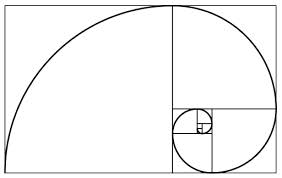
The Golden Ratio

The notched rectangles.

The Golden Ratio

The notched rectangles.
I dig that. No, really , I wish I could dig up artifacts. I think they went cannibalistic to scare away the roman empire from invading.
reply to post by luckey1962
They certainly did a good job of keeping the Romans out, whatever their methods!
They certainly did a good job of keeping the Romans out, whatever their methods!
We know that 3000 years ago, someone carved stone balls in Scotland.
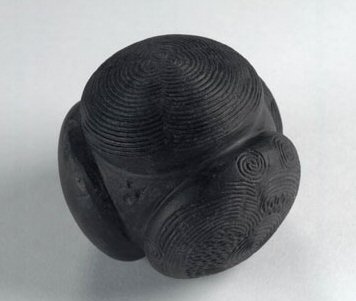
Surprisingly, 75% of these artifacts demonstrate the symmetry of the 5 Platonic solids.
We know that the Picts understood the Golden ratio:
(From page 2 of this thread)
Megalithic geometry
Are these symbols depicting something much more than broken arrows and broken swords?
Are these symbols the beginnings of skilled groups of craftsmen and women, who used these motifs on the stone to teach others?

Surprisingly, 75% of these artifacts demonstrate the symmetry of the 5 Platonic solids.
The Greeks taught that these five solids were the core patterns of physical creation. Four of the solids were seen as the archetypal patterns behind the four elements (earth, air, fire, and water), while the fifth was held to be the pattern behind the life force itself, the Greeks' ether. These same shapes are now realised to be intimately related to the arrangements of protons and neutrons in the elements of the periodic table. (5)
The Platonic solids can be traced onto the surface of a sphere through a process called radial projection, with each face having the same angles and shape. Carved stone balls come in many shapes, but most have bosses equal to the number of faces on the Platonic solids. Their makers were generating spherical objects with maximal symmetry. The number of bosses on the balls as listed by Marshall, were analysed by Manoel de Campos Almeida, a professor of mathematics who is interested in the Platonic solids. He determined that the number of bosses was not randomly allocated (over 75% of all carved stone balls have a number of bosses that equates with one of the five Platonic solids) proving mathematically that Neolithic people were able to count to at least 135 and were radially-projecting the Platonic solids (and their duals) in the hardest material available to them at the time, some 1500 years before Plato wrote about them in Timaeus.
We know that the Picts understood the Golden ratio:
‘A study of one the most important archaeological discoveries in Scotland for 30 years, a Pictish monastery at Portmahomack on the Tarbat peninsula in Easter Ross, has found that they were capable of great art, learning and the use of complex architectural principles. And, in a discovery described as "astonishing, mind-blowing" by architectural historians, it appears that the people who built the monastery did so using the proportions of "the Golden Section", or "Divine Proportion"
(From page 2 of this thread)
Freemasonry and Sacred Geometry.
Following the collapse of the Roman empire, architects versed in geometry grouped together into 'guild's', thus forming the roots of 'freemasonry'. The tradition of building sacred/holy structures with applied sacred (euclidian), geometry was continued into the middle ages by the 'Templars', who envisioned their (mostly round) churches as 'microcosms of the world' (1). This idea was soon adopted by the Christian church, who began to employ 'sacred' dimensions into their religious buildings. These traditions were carried in the form of 'freemasonry' until, as Pennick aptly quotes - 'The lodges of freemasons closed down one by one. The last to go was the premiere lodge of Europe - Strasbourg, which shut shop in 1777. From then on, the arts and mysteries of freemasonry were carried on exclusively by 'Speculative masons' (1).
Megalithic geometry
Are these symbols depicting something much more than broken arrows and broken swords?
Are these symbols the beginnings of skilled groups of craftsmen and women, who used these motifs on the stone to teach others?
beansidhe
reply to post by stormcell
(It's an exercise to try and find your way in from the North Sea without using a zoomed-out view. The only way settlers could let each other know that land had been claimed would be to carve stone obelisks.
Your suggestion is that these were originally markers to let others know you had claimed the land, and would be back later. And that the Picts carried this tradition with them, even after settling in Scotland.
I really like that, stormcell. I got a bit carried away with the Kelpie idea, and didn't quite appreciate what you were saying first time round.
That idea makes a lot of sense.
Everyone is so inspiring here, this is great!
I like the Kelpie idea too, perhaps these stones are for horse riders. From the original picture, the one with the three sets of drawings (man on the horse, Z-rod and the crescent shape), I wonder if they were distance or direction markers like highway signs for horse riders, or whether the stones face south (lined up with the Sun/Moon).
In modern symbology, the lighting flash or Z-rod indicates a wireless connection:
wiki.slimdevices.com...
Ridley Scotts, Prometheus. maybe gives us some clues about the origin of mankind in the opening scene Dr Elizabeth Shaw along with her team of
scientist's uncover ancient star system plans in a cave in Northern Scotland.
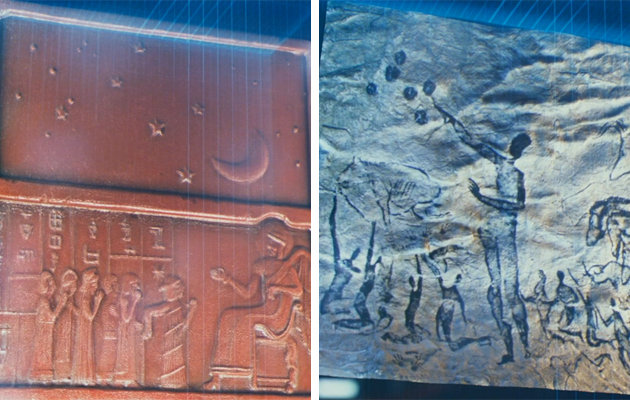
Now for Ridley to pick this location for the find. asks me "why here"
Did the Engineers/space jockeys pick the Northern Celts as part of there experiment to educate (or guard) some off the more important artefact's for safe keeping, (Bit like an interstellar Holy grail for example).
Cody, interesting poem,
Here's the valiant Cornishman
Who slew the Giant Cormoran.
Any follow up on that poem.

Now for Ridley to pick this location for the find. asks me "why here"
Did the Engineers/space jockeys pick the Northern Celts as part of there experiment to educate (or guard) some off the more important artefact's for safe keeping, (Bit like an interstellar Holy grail for example).
Cody, interesting poem,
Here's the valiant Cornishman
Who slew the Giant Cormoran.
Any follow up on that poem.
edit on 3-2-2014 by foxhound2459 because: reread thread.
reply to post by stormcell
Lightning is often suggested for the Z rods, and it's possible - sky Gods come to mind. I like your thinking about direction, because it fits in with Thorneblood's material world/Otherworld thoughts, and because it seems familiar to us -we still use arrows to show direction.
Let me get back to you about which way they faced - I'll find it somewhere with a bit of digging!
Lightning is often suggested for the Z rods, and it's possible - sky Gods come to mind. I like your thinking about direction, because it fits in with Thorneblood's material world/Otherworld thoughts, and because it seems familiar to us -we still use arrows to show direction.
Let me get back to you about which way they faced - I'll find it somewhere with a bit of digging!
reply to post by foxhound2459
You are the second person to mention space; an interstellar Holy Grail is a brilliant idea! Your picture showed a figure teaching about the stars: could these be star maps?
Do the animals correspond to constellations?
Foxhound, you might be a genius...
Now for Ridley to pick this location for the find. asks me "why here". Did the Engineers/space jockeys pick the Northern Celts as part of there experiment to educate (or guard) some off the more important artefact's for safe keeping, (Bit like an interstellar Holy grail for example).
You are the second person to mention space; an interstellar Holy Grail is a brilliant idea! Your picture showed a figure teaching about the stars: could these be star maps?
Do the animals correspond to constellations?
Foxhound, you might be a genius...
reply to post by beansidhe
Beanie, just a little story I have been following up on,
My big cat (Oscar) recently went for a stroll about a month ago it was a wet miserable night with heavy cloud cover and strong winds
Now being a house proud cat he did the sensible thing and took himself off to do his business so to speak,
Now he disappeared for approximately four nights at that time, Needless to say we grew very worried about him what with the storms and really cold nights plenty off cloud cover, But on the fourth night he returned safe and well ,Now I checked outside just prior to his homecoming and low and behold there was a break in the weather and there was lovely clear night time skies (I stargaze often).
It got me to thinking off how did he find his way home. Can cats starmap read !
Sounds abit out there, but if you think off the Ancient Egyptians and there almost divine worship of felines it makes you wonder did they know that cats can navigate using stars.
slightly off your main topic but has some relevance I hope,
Beanie, just a little story I have been following up on,
My big cat (Oscar) recently went for a stroll about a month ago it was a wet miserable night with heavy cloud cover and strong winds
Now being a house proud cat he did the sensible thing and took himself off to do his business so to speak,
Now he disappeared for approximately four nights at that time, Needless to say we grew very worried about him what with the storms and really cold nights plenty off cloud cover, But on the fourth night he returned safe and well ,Now I checked outside just prior to his homecoming and low and behold there was a break in the weather and there was lovely clear night time skies (I stargaze often).
It got me to thinking off how did he find his way home. Can cats starmap read !
Sounds abit out there, but if you think off the Ancient Egyptians and there almost divine worship of felines it makes you wonder did they know that cats can navigate using stars.
slightly off your main topic but has some relevance I hope,
reply to post by foxhound2459
Huge relevance, I think and this exactly what I was asking at the start - what do you think the stones are for? So anything that comes to mind, by association, is certainly relevant.
Wasn't there an article here recently about dogs aligning themselves towards north before they do what dogs do?
There was, and here it is: Dogs poop in alignment
So whether cats can see the stars, or 'feel' the stars, yes, I would go with that. Birds know how to navigate south, so why not cats?
I really wonder about this star chart idea, and I'm going to start looking it into it!
Huge relevance, I think and this exactly what I was asking at the start - what do you think the stones are for? So anything that comes to mind, by association, is certainly relevant.
Wasn't there an article here recently about dogs aligning themselves towards north before they do what dogs do?
There was, and here it is: Dogs poop in alignment
So whether cats can see the stars, or 'feel' the stars, yes, I would go with that. Birds know how to navigate south, so why not cats?
I really wonder about this star chart idea, and I'm going to start looking it into it!
I think I know what you want me to say :
Yes the monument symbol's, the knots and the broken arrow, all are off world origin that is the decision im arriving at, The Intelligence and passion of Scots (Celtic) people is something to be in awe off, having seen the negative side of Scots being portrayed as " Rab C Nessbits " by people with an agenda
The positive side is never really high lighted as it should be.
Could the Celtic blood line be a hybrid one (Dna altered) most certainly Imo.
Again im off to do some research this is getting to be an exciting thread, Beanie
Yes the monument symbol's, the knots and the broken arrow, all are off world origin that is the decision im arriving at, The Intelligence and passion of Scots (Celtic) people is something to be in awe off, having seen the negative side of Scots being portrayed as " Rab C Nessbits " by people with an agenda
The positive side is never really high lighted as it should be.
Could the Celtic blood line be a hybrid one (Dna altered) most certainly Imo.
Again im off to do some research this is getting to be an exciting thread, Beanie
reply to post by foxhound2459
It is exciting!
I've been incredibly stupid, because I have completely ignored the animal carvings. I assumed I understood them.
But do they match up with known constellations?
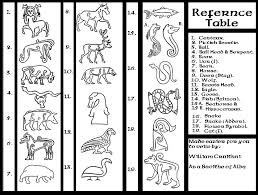
Centaur
Beastie
Bull
Snake
Boar
Lion
Bear
Horse
Stag
Wolf
Eagle
Goose
Fish
Sea horse? Beastie
Flower
Cat (looks like a monkey to me).
Some are definitely constellations - bear, archer (centaur), lion etc.
Not sure about the others but I'll go and find out.
It is exciting!
I've been incredibly stupid, because I have completely ignored the animal carvings. I assumed I understood them.
But do they match up with known constellations?

Centaur
Beastie
Bull
Snake
Boar
Lion
Bear
Horse
Stag
Wolf
Eagle
Goose
Fish
Sea horse? Beastie
Flower
Cat (looks like a monkey to me).
Some are definitely constellations - bear, archer (centaur), lion etc.
Not sure about the others but I'll go and find out.
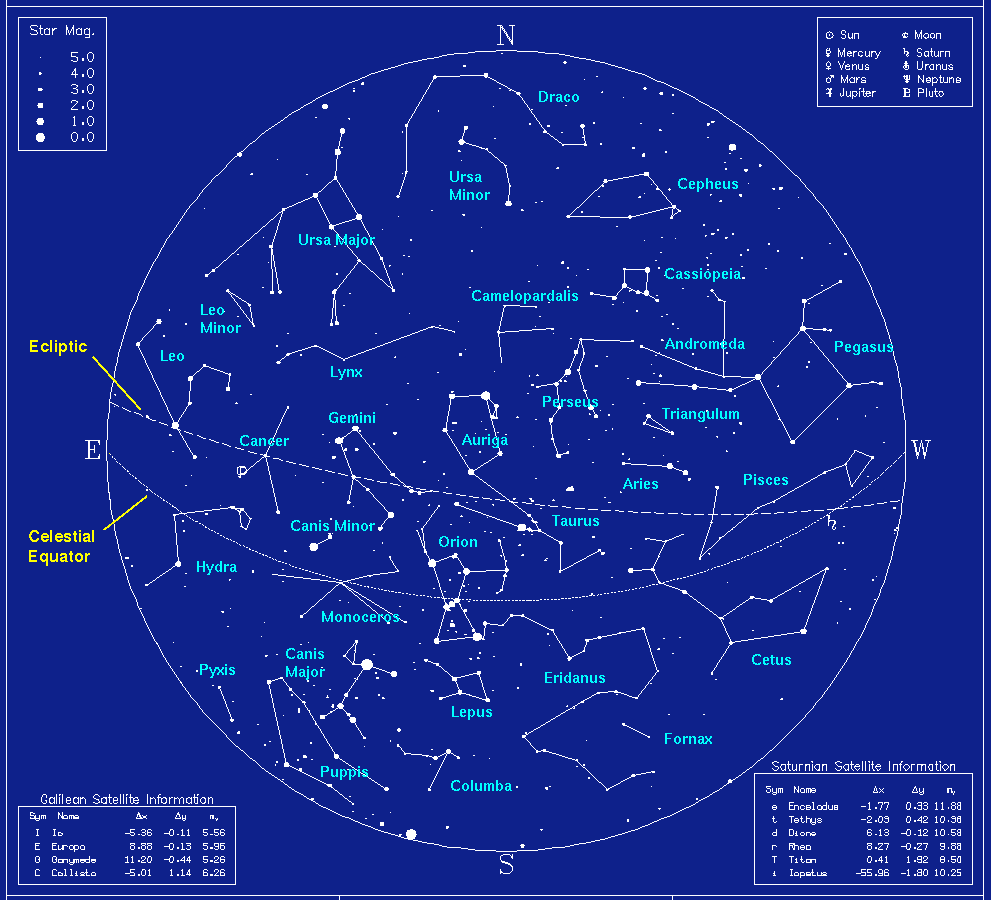
And a handy list of what they mean. Any astronomers reading, please don't s'n-word' at my attempts to work this out!
Constellations
Centaur = Sagittarius
Beastie = Delphinus (the Dolphin)?
Bull = Taurus
Snake = Serpens (the Snake) / Hydra (the Water Snake)
Boar = Ursa Minor (little Bear - might be stretching it a bit)
Lion = Leo
Bear = Ursa Major (Big Bear)
Horse = Pegasus?
Stag = Hmm?
Wolf = Lupus (the Wolf)
Eagle = Aquila (the Eagle)
Goose = Cygnus (the Swan)?
Fish = Pisces
Sea Horse = Capricorn (Fish Goat)?
Flower = ???
Cat/Monkey = ???
That's quite interesting.
reply to post by foxhound2459
Any follow up on that poem.
Legends - The Archangel St. Michael and Cormoran, the Cornish Giant.
The island is steeped in local folklore and history. Children listen intently to tales of "Jack the Giant killer" as they walk past the well were the Giant was eventually trapped. Cornish Legend holds that the Mount was built by the giant, 'Cormoran'. Cormoran, would wade ashore from the island, to snatch cows and sheep as they grazed in the local fields around Marazion. A local boy rowed out to the island whilst Cormoran slept. He worked through the night; digging a deep pit half way up the northern slope of the Mount. By morning, the pit was complete; Jack stood to one side of it and blew on his horn to wake the mighty Cormoran. The giant ran down the hillside, with the glare of the early morning sun dazzling his eyes. He failed to see either Jack or the pit and fell headlong into it. The grateful locals gave Jack the title 'Jack the Giant Killer' and a local rhyme was created about his exploits.
Here's the valiant Cornishman
Who slew the Giant Cormoran.
As you walk up the main pathway from the harbour to the Castle, you pass the heavily shuttered well, where the giant fell.
Lycidas (Milton)
Or whether thou to our moist vows deny'd,
Sleep'st by the fable of Bellerus old,
Where the great vision of the guarded Mount
Looks toward Namancos and Bayona's hold;
Look homeward Angel now, and melt with ruth.
And, O ye Dolphins, waft the haples youth.
In the great Celtic tragedy of Tristan and Isolde, which may be partly historical, the hermit Ogrin was sent by King Mark, to St. Michaels Mount to buy clothes of fine wool and linen, for Queen Isolde. During the 12th century, the legend was firmly based around the Cornish Coastline, Castle Dore near Fowey, the Forest of Moresk near Truro and St. Michaels Mount, but, in the political upheaval of mediaeval Britain, story was linked to the Legend of King Arthur and the Castle at Tintagel.
The mount itself, is dedicated to St. Michael, whom in Cornish Legend; appeared to a group of Cornish fishermen in 495 AD - standing high on a rocky ledge on the western side of the Mount. This is The Great Vision of the Guarded Mount from Milton's Lycidas (A lament for a friend drowned during a passage from Chester on the Irish Seas, 1637).
------------
The island/peninsula was most certainly a trading place for tin since ancient times. It is a viable candidate for the famous trading island called Itkin by the Phoenicians who traded tin with the native Britons before the common era. The island could have held the valuable tin offshore allowing the strangers to trade without actually setting foot on the mainland.
According to the folk tale, Jack the Giant Killer slew the Cornish Giant Cormoran after tricking him to fall into a pit on this island. The greenstone on the island is supposed to have been brought there by the Giantess Cormelian, wife of the Giant Cormoran, in her apron. Cormoran, building the mount of granite, saw that she had brought the wrong rock, and killed her. Cormelian dropped the stones as she fell dead and is said to be buried under the pile of greenstone still found today.
A sister location, Mont St Michel is located across the English Channel along the northern coast of Normandy.
Cody
beansidhe
reply to post by foxhound2459
Huge relevance, I think and this exactly what I was asking at the start - what do you think the stones are for? So anything that comes to mind, by association, is certainly relevant.
Wasn't there an article here recently about dogs aligning themselves towards north before they do what dogs do?
There was, and here it is: Dogs poop in alignment
So whether cats can see the stars, or 'feel' the stars, yes, I would go with that. Birds know how to navigate south, so why not cats?
I really wonder about this star chart idea, and I'm going to start looking it into it!
(( Site ))
To Answer your Question here some Links !
Feline Vision: How Cats See the World
By Tia Ghose, Staff Writer | October 16, 2013 09:27am ET
www.livescience.com...
How Well Do Dogs See At Night?
Date:
November 9, 2007
Source:
University of Wisconsin - Madison
Summary:
Dogs see a lot better than humans do at night. Dogs have many adaptations for low-light vision. A larger pupil lets in more light. The center of the retina has more of the light-sensitive cells (rods), which work better in dim light than the color-detecting cones.
www.sciencedaily.com...
(( Navigation )
Site navigation
How a Kitty Walked 200 Miles Home: The Science of Your Cat’s Inner Compass
A house cat's long-distance journey raises new questions about how animals navigate
science.time.com...
Extraordinary Cats
Homing Instinct
www.pbs.org...
Just Maybe the reason why the Egyptians, Sumerians & Assyrians Loved Cats so Much! ..
and May of been used as a Navigation tool ??
Don't forget the Lay Lines of Europe ...
Stones 0f Wonder - orientated standing stones, alignments and cairns in Scotland
Archaeoastronomy - astro archaeology and Scottish archaeology links
www.stonesofwonder.com...

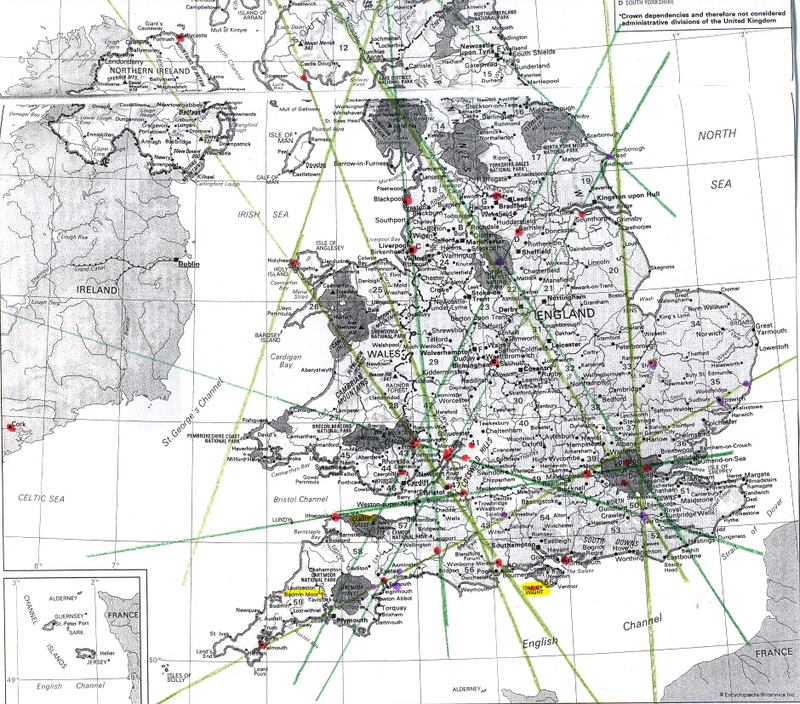
edit on 3-2-2014 by Wolfenz because: (no reason given)
edit on 3-2-2014 by Wolfenz because: (no reason given)
reply to post by Wolfenz
Wolfenz, you do know you are amazing?
From your link:
Sciencetime.com
So if this is natural to animals, then probably to humans too, and it might not be such a surprise then that the Picts might be communicating something about astronomy.
Ok, so now to more archaeo-astronomy!
The Belinus Line
So Cygnus the Swan (goose?), Aquila the Eagle, Sagittarius the Centaur. If they appear together on a stone, that might be too much of a coincidence.
And at a glance, does Roslin not fall on this line?
'Pit' places names in Scotland are usually Pict places and so, this is certainly starting to get very intriguing indeed.
Are the stones older than we think, if as McHardy postulates the Picts are the indigenous population of Scotland??
Wolfenz, you do know you are amazing?
From your link:
Part of what navigating animals do is not entirely surprising. Planetarium studies reveal that some animals steer by the stars, an approach that’s comfortingly familiar to Homo sapiens but practiced by organisms as distant as the nocturnal dung beetle, which, as one recent study revealed, can roll its precious gob of poo in a straight line only as long as the Milky Way is in view. One of the most accomplished animal navigation researchers of the twentieth century, naturalist Ronald Lockley, found that captured seabirds released far from their homes could make a beeline back so long as either the sun or the stars were visible; an overcast sky threw them off so much that many never made it back.
But plenty of other navigating animals are using something most humans regularly forget exists: the Earth’s magnetic field. In illustrations, the field is usually depicted as a series of loops that emerge from the south pole and reenter the planet at the north pole, and extend out to the edges of our atmosphere, sort of like a cosmic whisk. Our compass needles are designed to align with the field, and in the last few decades it’s become clear that numerous animals can find their way by feeling some of its various field.
Sciencetime.com
So if this is natural to animals, then probably to humans too, and it might not be such a surprise then that the Picts might be communicating something about astronomy.
Ok, so now to more archaeo-astronomy!
The Belinus Line
The reason for the precise angle of the line is twofold. It may have been created solely as a geographically central line running from the Isle of Wight at the base of the country ( a place the Romans used to survey their invasion of Britain) to correspond with ancient routes and fording places, or alternatively it was laid down to mark a cosmic axis. Perhaps it is a combination of both, where heaven and earth entangle to create a great corridor of power around the planet. Looking north from many of the important Node points along the Belinus Line towards the point where it touches the horizon, you will notice certain features marking the setting and rising of the stars of the constellation of Cygnus.
The stars of Cygnus also fall within the ‘Great Rift’ or Dark Rift, a black river that divides the Milky Way along its length from Cygnus to Aquila and then broadening out to Sagittarius, where it obscures the Galactic Centre. This region of the night sky was considered important to many ancient cultures as a mythological place of heaven or spiritual rebirth.
So Cygnus the Swan (goose?), Aquila the Eagle, Sagittarius the Centaur. If they appear together on a stone, that might be too much of a coincidence.
And at a glance, does Roslin not fall on this line?
In Scotland, the alignment passes through Pitlochry in Perthshire, the most geographically central town in Scotland, Inverness, the capital of the Highlands, and the prehistoric centre at Lairg, the centre of Sutherland. Therefore, I believe the Belinus Line is Britain’s north–south axis mundi of sacred centres
'Pit' places names in Scotland are usually Pict places and so, this is certainly starting to get very intriguing indeed.
Are the stones older than we think, if as McHardy postulates the Picts are the indigenous population of Scotland??
edit on 4-2-2014 by beansidhe because: Added links
edit on 4-2-2014 by beansidhe because: Pitlochry
reply to post by beansidhe
Yes it does, according to this gentleman:
Alineamento
Yes it does, according to this gentleman:
The line continues into Scotland and passes through sites such as Carlisle, Langholm, Eskdale near to Rosslyn Chapel (Knights Templar centre) before crossing the Forth Railway Bridge (the foundations of the bridge are laid over an old track).
Pitlochery (the geographical centre of Scotland) through the prehistoric Clava Cairns www.darkisle.com... ,
Culloden, Lairg (a large prehistoric settlement) and finally reaches the north coast at Inverhope on its way to the Faroe islands.
Alineamento
reply to post by beansidhe
This is fun I'm glad you started this.
Keep going, lol.
There is a lot of cool info ya'll are digging up.
This is fun I'm glad you started this.
Keep going, lol.
There is a lot of cool info ya'll are digging up.
new topics
-
Why isn't Psychiatry involved?
Social Issues and Civil Unrest: 5 hours ago -
Help in song interpretation
Music: 6 hours ago -
FEMA Head Admits Agency Skipped 20 Homes with Trump Signs
Mainstream News: 9 hours ago -
Yet another Hack...
Rant: 10 hours ago
top topics
-
FEMA Head Admits Agency Skipped 20 Homes with Trump Signs
Mainstream News: 9 hours ago, 13 flags -
Yet another Hack...
Rant: 10 hours ago, 12 flags -
Gaetz ethics investigation results "hacked".
US Political Madness: 14 hours ago, 10 flags -
Help in song interpretation
Music: 6 hours ago, 1 flags -
Why isn't Psychiatry involved?
Social Issues and Civil Unrest: 5 hours ago, 1 flags
active topics
-
Why isn't Psychiatry involved?
Social Issues and Civil Unrest • 6 • : VariedcodeSole -
DefCon Teetering on Escalation
World War Three • 46 • : ADVISOR -
FEMA Head Admits Agency Skipped 20 Homes with Trump Signs
Mainstream News • 11 • : AlroyFarms -
Post A Funny (T&C Friendly) Pic Part IV: The LOL awakens!
General Chit Chat • 7801 • : PorkChop96 -
Russia Ukraine Update Thread - part 3
World War Three • 6835 • : Oldcarpy2 -
U.S. Closes Kyiv Embassy Over ‘Significant Air Attack’ Intelligence
World War Three • 41 • : Imhere -
Well, here we go red lines crossed Biden gives the go ahead to use long range missiles
World War Three • 312 • : Oldcarpy2 -
Famous Catholic Exorcist Visits Mir-a-Lago
US Political Madness • 19 • : chr0naut -
-@TH3WH17ERABB17- -Q- ---TIME TO SHOW THE WORLD--- -Part- --44--
Dissecting Disinformation • 3331 • : brewtiger123 -
Help in song interpretation
Music • 1 • : FullHeathen
